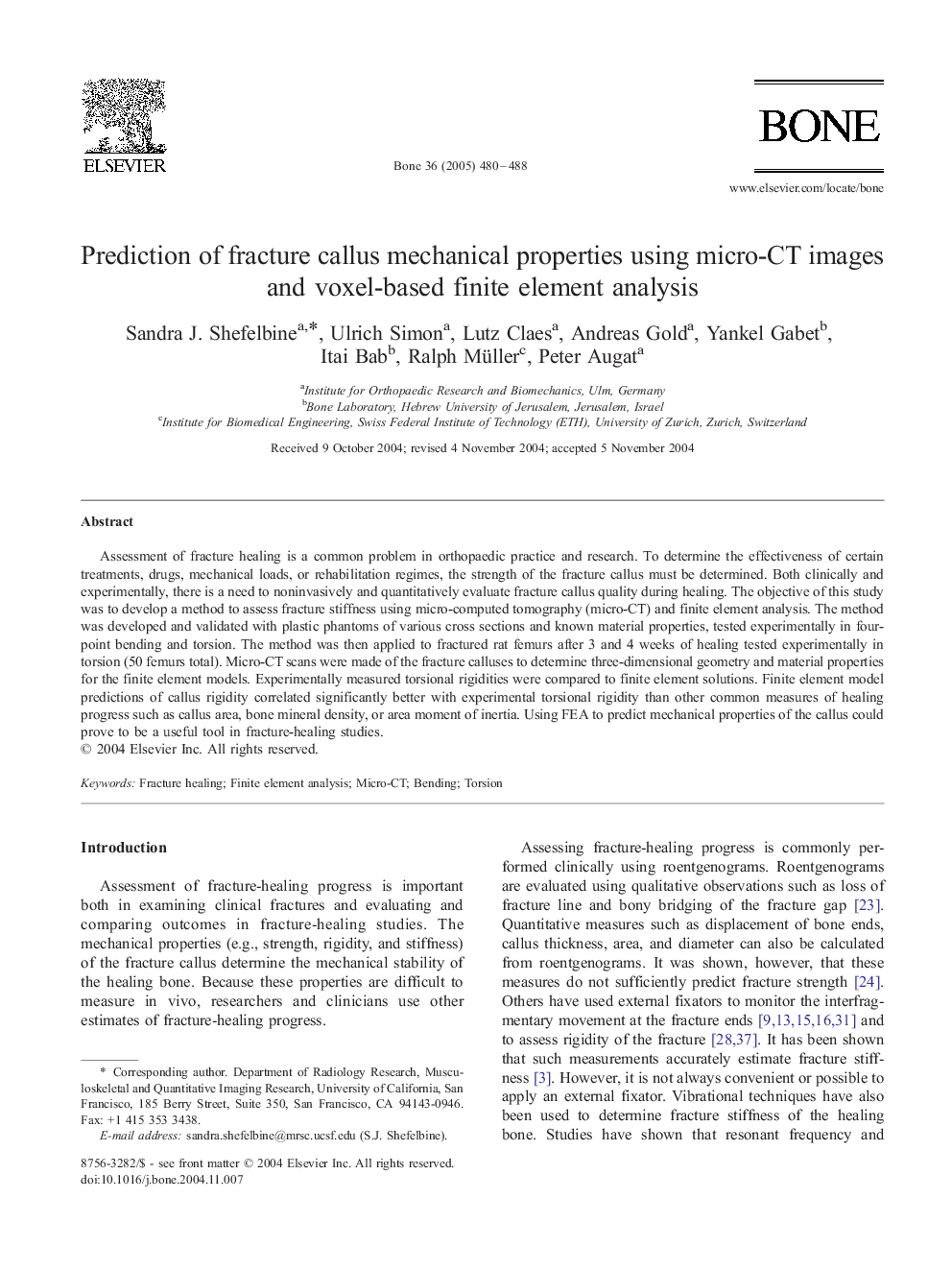| Article ID | Journal | Published Year | Pages | File Type |
|---|---|---|---|---|
| 9104831 | Bone | 2005 | 9 Pages |
Abstract
Assessment of fracture healing is a common problem in orthopaedic practice and research. To determine the effectiveness of certain treatments, drugs, mechanical loads, or rehabilitation regimes, the strength of the fracture callus must be determined. Both clinically and experimentally, there is a need to noninvasively and quantitatively evaluate fracture callus quality during healing. The objective of this study was to develop a method to assess fracture stiffness using micro-computed tomography (micro-CT) and finite element analysis. The method was developed and validated with plastic phantoms of various cross sections and known material properties, tested experimentally in four-point bending and torsion. The method was then applied to fractured rat femurs after 3 and 4 weeks of healing tested experimentally in torsion (50 femurs total). Micro-CT scans were made of the fracture calluses to determine three-dimensional geometry and material properties for the finite element models. Experimentally measured torsional rigidities were compared to finite element solutions. Finite element model predictions of callus rigidity correlated significantly better with experimental torsional rigidity than other common measures of healing progress such as callus area, bone mineral density, or area moment of inertia. Using FEA to predict mechanical properties of the callus could prove to be a useful tool in fracture-healing studies.
Related Topics
Life Sciences
Biochemistry, Genetics and Molecular Biology
Developmental Biology
Authors
Sandra J. Shefelbine, Ulrich Simon, Lutz Claes, Andreas Gold, Yankel Gabet, Itai Bab, Ralph Müller, Peter Augat,
